This article dives into the Premack Principle and how it can be a game-changer for behavior management in various settings like therapy, education, parenting, and workplace motivation. It highlights how pairing less preferred tasks with enjoyable activities can truly boost motivation and task completion. Plus, there’s solid evidence from research and case studies to back this up, showing significant improvements in overall behavior.
Let’s explore this together! By understanding the Premack Principle, you can find effective ways to motivate yourself and others in your life. Whether you’re a parent looking to encourage your child or a manager aiming to inspire your team, this principle offers valuable insights. We’re here to help you every step of the way!
The Premack Principle, often summed up with the phrase "first, then," presents a refreshing way to manage behavior that can turn everyday tasks into exciting challenges. By using more enjoyable activities as rewards for tackling less favored ones, this strategy not only motivates individuals—especially children—but also helps create a structured environment that promotes learning and growth.
But how can caregivers and educators effectively bring this principle to life in different settings to reap its full benefits? Let’s explore seven compelling examples of the Premack Principle in action, showcasing its powerful impact on behavior modification and skill development. We’re here to help you every step of the way!
The Premack Principle, often summed up in the phrase 'first, then,' is a fantastic strategy in ABA therapy. It uses a more favored activity to boost a less favored one, helping our young ones tackle essential tasks. For an example of the Premack Principle, a child might be encouraged to finish their homework—something that’s usually not so fun—before diving into a favorite video game, which is definitely more appealing. This approach not only sparks motivation but also helps create a consistent routine that fosters positive behavior and task adherence.
Research shows that applying this concept can significantly enhance children's behavior in autism treatment. A systematic review found that 90% of youth made notable strides in task completion and behavior management when recommended hours of involvement were paired with active caregiver participation. This really highlights how effective the Premack Principle can be in reinforcing those preferred actions! Plus, studies indicate that linking enjoyable activities with less desirable tasks can lead to greater productivity and satisfaction, turning everyday routines into rewarding experiences.
Case studies serve as an example of the Premack Principle applied successfully in various settings. For instance, one study focused on a 7-year-old student with autism, where using this principle led to better task completion rates and fewer challenging behaviors like tantrums and refusal to engage. By pairing less favored tasks with enjoyable activities—like treating oneself to a favorite snack after finishing an assignment—individuals can experience a positive reinforcement loop that boosts motivation and overall well-being.
Bringing this concept into daily routines not only enhances modification techniques but also helps families and clinicians craft effective strategies tailored to each child's unique needs. By understanding and applying this principle, caregivers can better organize tasks and rewards, leading to improved outcomes in behavior and skill development. Let’s explore this together and see how we can make a difference in our children’s lives!
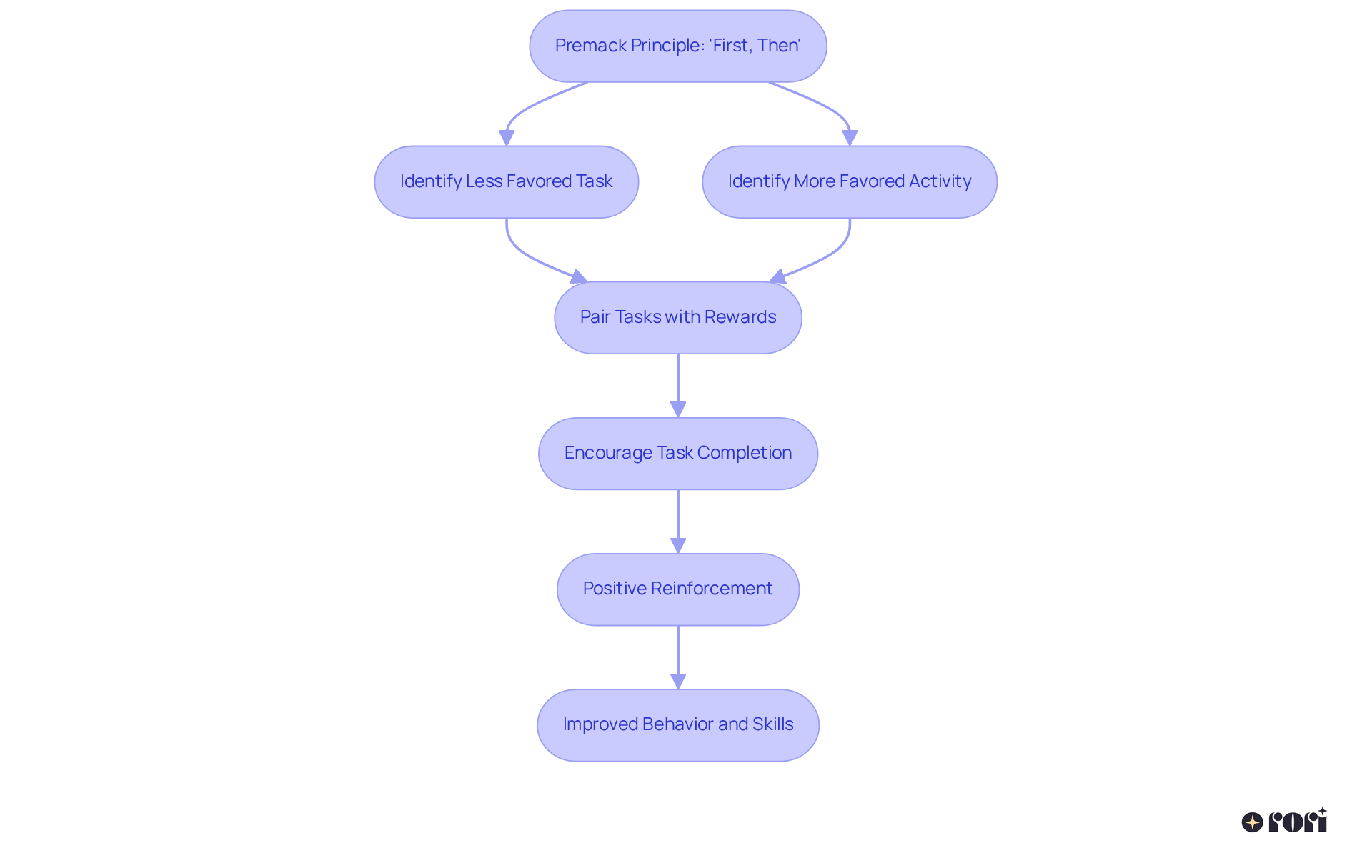
In educational environments, educators can really make a difference by using an example of the Premack principle, linking fun activities like games or art projects to those tasks that aren’t as popular, such as completing math worksheets. This approach is an example of the Premack principle, as it not only boosts student motivation but also helps them focus and participate more actively. Research shows that using structured reinforcement techniques can lead to a 30% increase in task completion rates among students! Plus, 75% of learners who engaged with this concept maintained positive behaviors over six months, highlighting its lasting benefits.
By setting up clear routines and incentives, educators can create an example of the Premack principle, fostering a positive reinforcement cycle that nurtures essential skills and makes learning more enjoyable. Let’s explore this together and see how we can support our students in a fun and effective way!
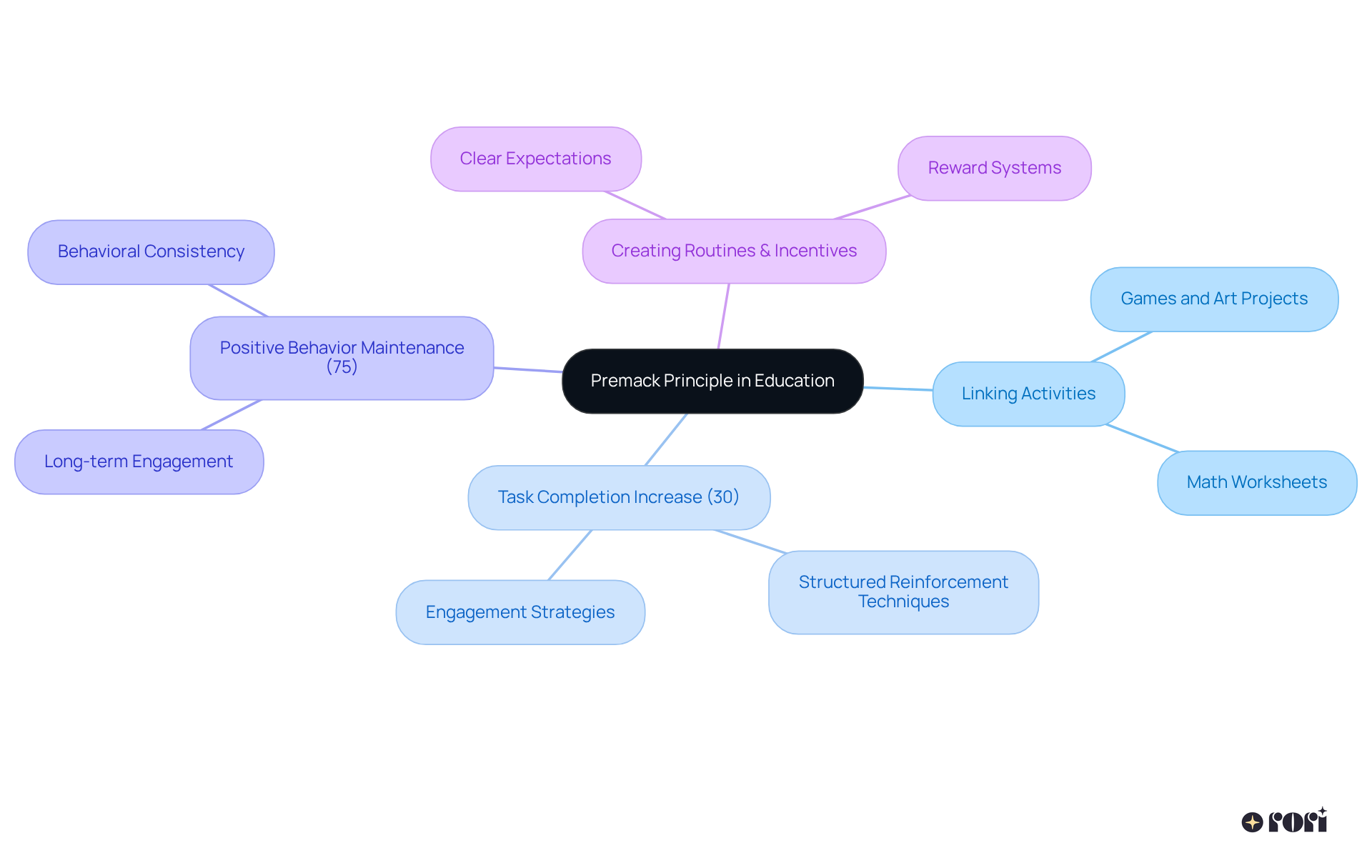
When it comes to training our furry friends, a fantastic concept is to let your dog enjoy a favorite activity, like playing fetch, right after they complete a less exciting task, such as sitting on command. This method not only reinforces those desired behaviors but also strengthens the bond between you and your pup, making training sessions more fun and effective! 🐾
Research shows that using positive reinforcement strategies, like the Premack principle, can lead to improved behavior in around 80% of dogs. By consistently applying this idea, trainers can create an environment where dogs learn to link obedience with rewarding experiences, ultimately fostering good manners and compliance.
To make this work, it’s essential to recognize what activities your dog loves and use them as incentives. This way, you motivate your dog to engage in those less favored tasks more often. Not only does this approach promote effective learning, but it also nurtures a positive relationship between you and your four-legged companion.
And here’s a little tip: providing immediate rewards after your dog shows the desired behavior helps create clear associations. Plus, maintaining consistency in your training methods really boosts the effectiveness of this approach. So, let’s explore this together and make training a joyful experience for both you and your dog!
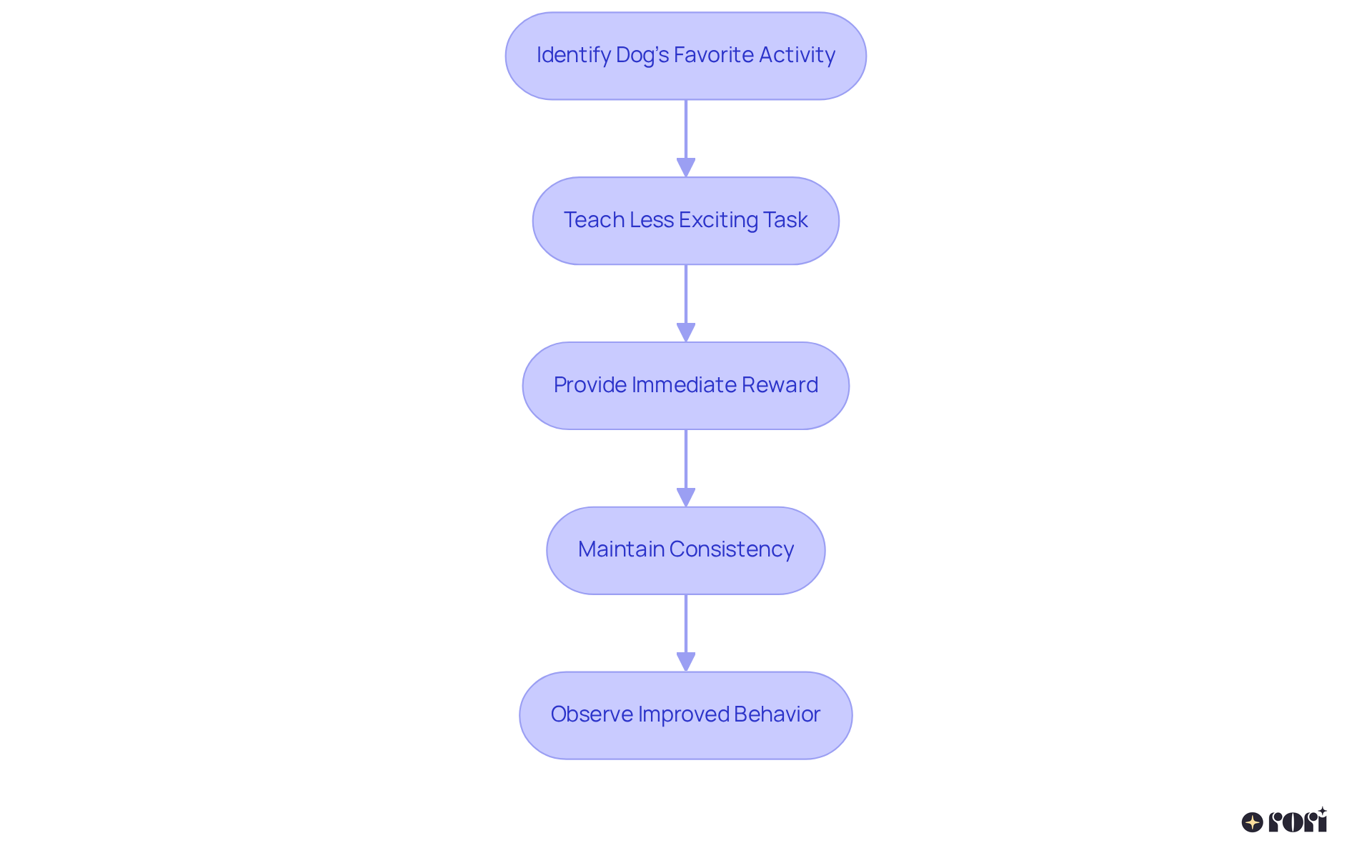
Parents, have you ever felt the challenge of getting your kids to help out around the house? One effective way to tackle this is by using an example of the Premack Principle. You can allow your youngsters to enjoy their screen time—an activity they love—only after they've completed their chores, which they might not favor as much. This approach not only encourages them to fulfill their responsibilities but also teaches them the valuable lesson of finishing tasks before diving into leisure activities.
Research shows that kids who regularly engage in household chores tend to develop better executive functioning skills, like improved impulse control and working memory. For instance, a study published in the Australian Occupational Therapy Journal found that children involved in self-care and family-care tasks exhibited improved cognitive skills. This reinforces just how important it is for kids to participate in chores!
Moreover, kids who help out around the house often excel academically and develop stronger problem-solving skills. By framing chores as an example of premack principle that leads to fun activities, you can create a structured environment that fosters cooperation and responsibility. Experts suggest that this method nurtures a sense of achievement and boosts self-esteem, making kids more willing to pitch in.
As Michael Vallejo, LCSW, puts it, "Household tasks offer a straightforward but effective method for parents to enhance their offspring's executive functioning abilities." So, why not turn these routine tasks into meaningful learning opportunities? They can foster personal growth and strengthen family bonds.
To get started, consider creating a chore chart that outlines tasks and rewards. This makes the process clear and engaging for your children. Let’s explore this together and see how it can make a difference in your home!
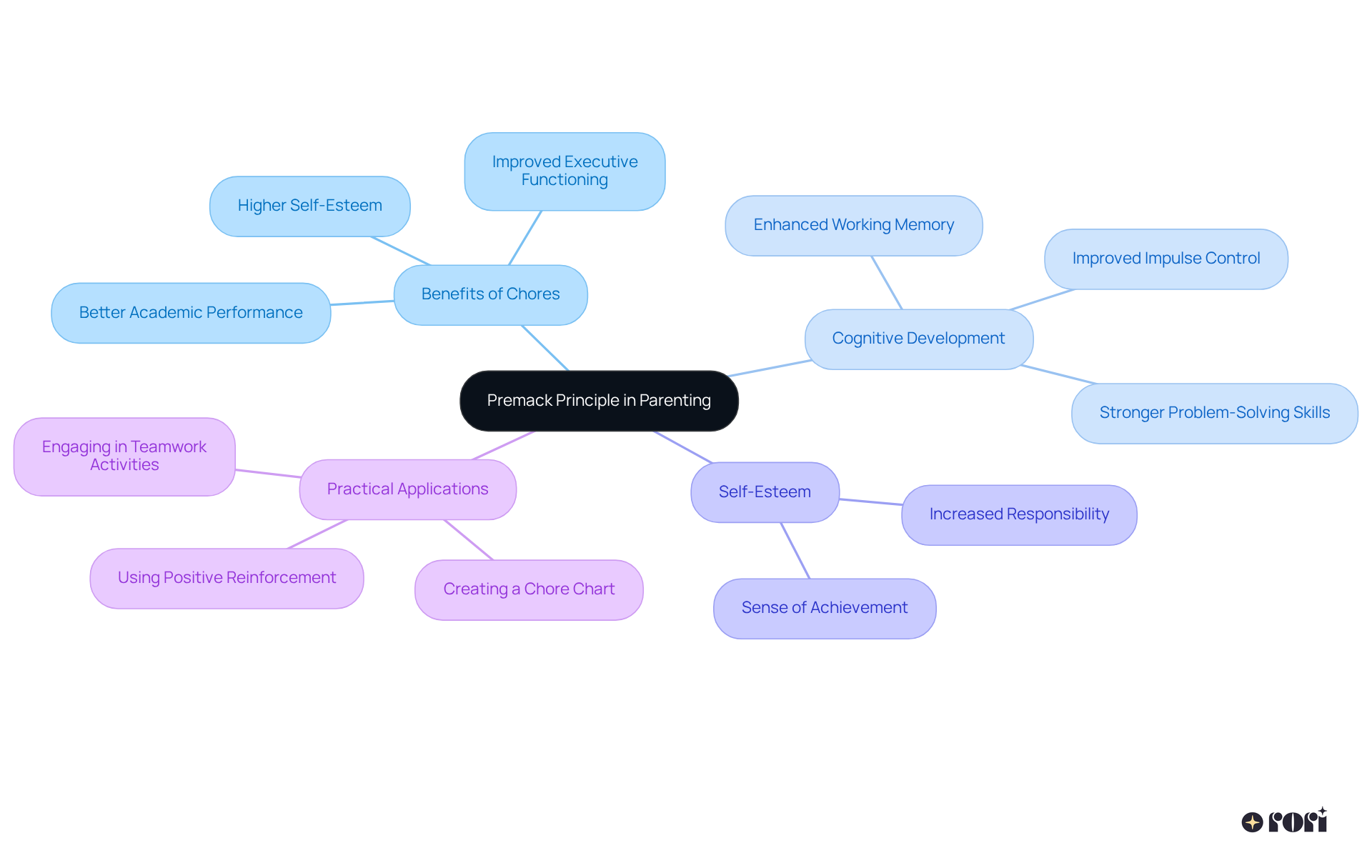
In behavioral therapy, practitioners can effectively use a fun concept: letting clients dive into a favorite activity, like drawing or playing a game, after they finish their therapeutic exercises. This approach not only boosts positive actions but also builds a lovely connection between therapy and enjoyable experiences. It makes clients more eager to engage! 😊
Research shows that reinforcement techniques, including something called the Premack Principle, can really amp up engagement and compliance in therapy settings. For instance, studies have found that classrooms using positive reinforcement can see a whopping 78% drop in disruptive behaviors and a 67% increase in on-task activities. By weaving in preferred activities as rewards, therapists can create a motivating atmosphere that encourages skill acquisition and behavioral improvements.
This aligns perfectly with expert recommendations that advocate for the regular use of positive reinforcement in various settings to promote desired behaviors and teach new skills effectively. Plus, ABA interventions that follow ethical standards have achieved a fantastic 64% improvement in long-term results, providing a clear example of the Premack principle and highlighting the importance of ethical practices.
Overall, this concept is an example of the Premack principle, serving as a powerful tool in behavioral therapy that helps clinicians enhance treatment outcomes while fostering a supportive therapeutic environment. Let’s explore this together and see how it can make a difference! We’re here to help you every step of the way!

The Premack Principle serves as an example of premack principle, which is a wonderful way to help kids improve their social skills! It encourages them to engage in less favored social interactions before diving into something they love, like playing with a favorite toy. This approach not only boosts social interaction but also equips young ones with vital skills to navigate social situations more effectively.
For instance, the scenario where kids are nudged to interact with their peers or join group activities before they can access their favorite games serves as an example of premack principle, helping them understand the value of social connections and teamwork. Research shows that these strategies can significantly aid in their development, enhancing communication and social skills while reducing feelings of isolation.
By weaving this concept into daily routines and consistent environments, caregivers can create spaces that foster positive social interactions. As David Premack noted, "Empirical research has demonstrated that utilizing the Premack Principle can produce significant success in altering behaviors among individuals on the autism spectrum." This ultimately leads to improved emotional and social well-being for our little ones.
Parents can easily implement this example of the premack principle by using a 'First/Then' strategy. For example, encouraging kids to complete a less preferred social task, like saying hello to a peer, before enjoying a fun activity, such as playing a game, can make a big difference. Let’s explore this together and see how it can work for your family!
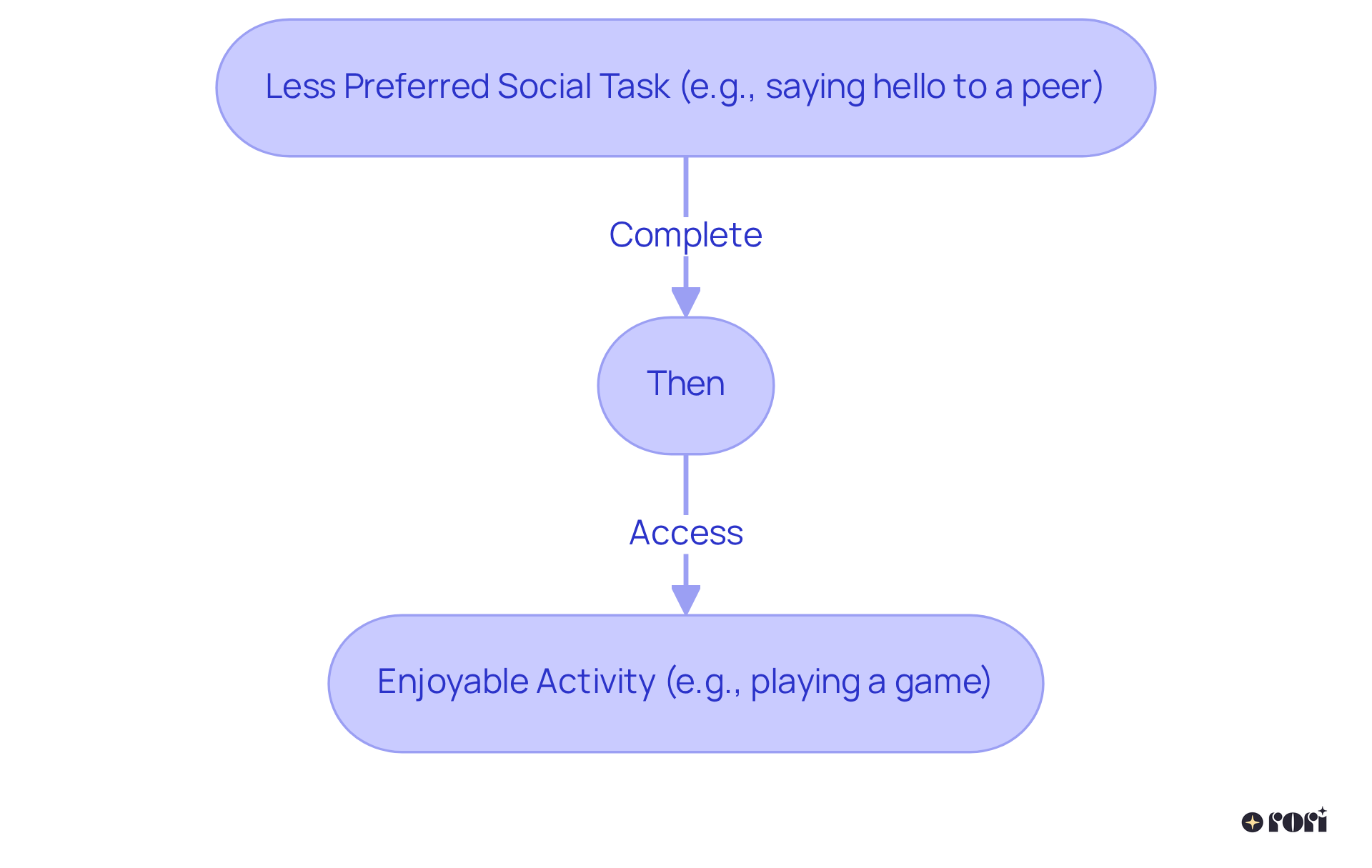
In the workplace, managers can really make a difference by rewarding tasks in a fun way! Imagine allowing employees to enjoy activities or take breaks after tackling tough assignments. This simple strategy not only lifts morale but also gives productivity a nice boost. Research shows that when employees look forward to enjoyable activities, they’re more likely to finish their work efficiently. For instance, teams with high morale are 21% more productive—how amazing is that?
Managers can cultivate a more engaged and motivated workforce by setting up a system that exemplifies the example of the Premack principle, where fun activities serve as rewards for completing tasks, like:
Plus, let’s not forget about the importance of addressing mental wellness for remote employees. It’s key to keeping productivity and job satisfaction high.
As Dwight D. Eisenhower wisely said, "Motivation is the art of getting people to do what you want them to do because they want to do it." By weaving in regular feedback and recognition, managers can further boost motivation and performance, leading to happier employees. Let’s explore this together and see how these strategies can make a positive impact!
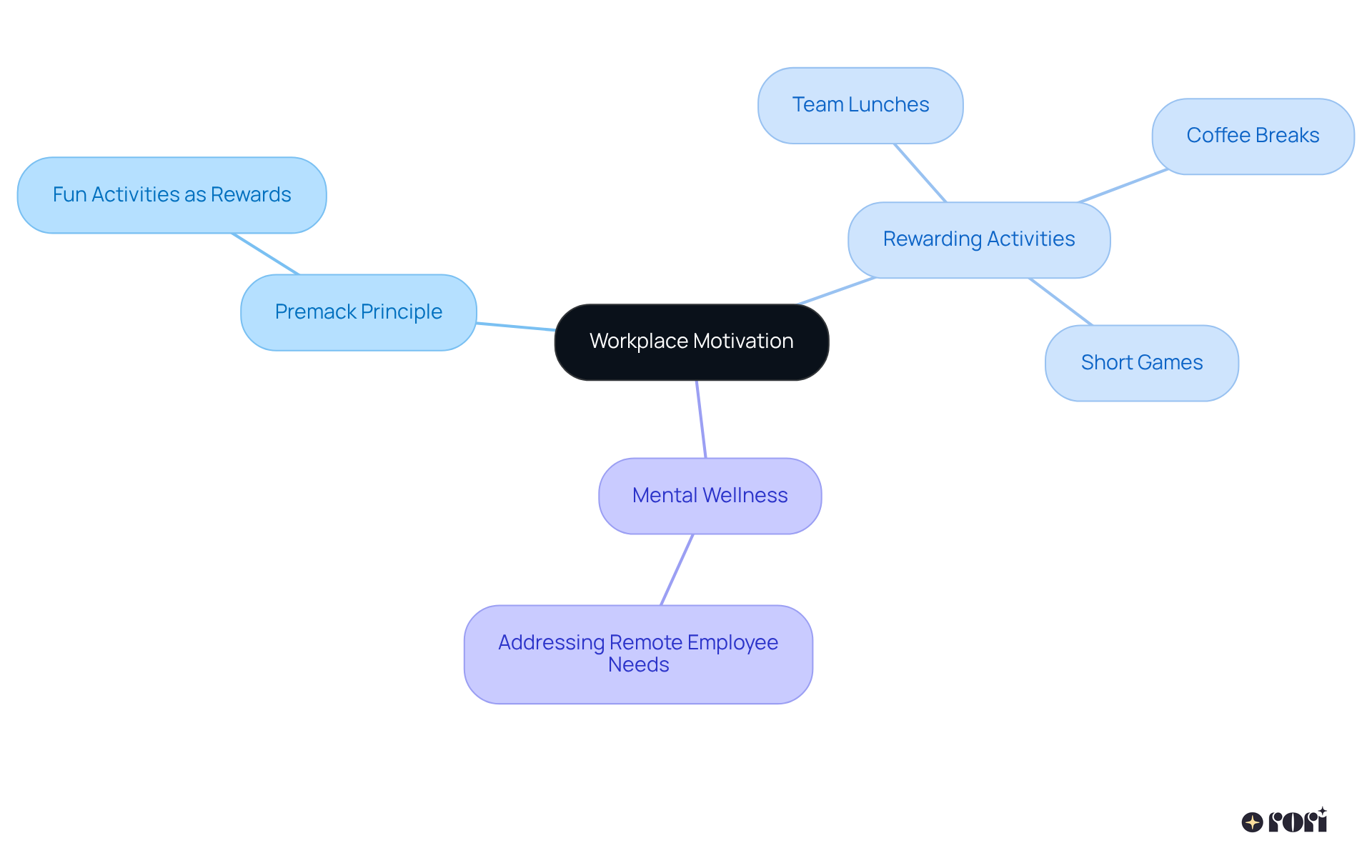
Families can effectively use an example of the Premack Principle by allowing kids to enjoy fun activities, like playing outside or watching a movie, after they finish their tasks, such as homework or chores. This not only reinforces positive behaviors but also creates an organized environment where young people learn to balance their responsibilities with enjoyable moments.
Research shows that using leisure activities as rewards can really boost motivation in kids, making it a powerful strategy for managing behavior. For instance, experts recommend a 4:1 ratio of positive praise to increase motivation. David and others emphasize that balancing responsibilities and leisure is crucial for youth development, as it teaches them the value of completing tasks before reaping rewards.
Successful family strategies often involve setting clear expectations, like defining specific chores or homework assignments, and consistently applying an example of the Premack Principle. This helps kids understand the connection between their efforts and the fun activities they look forward to. As families tackle the challenges of behavior management, weaving leisure activities into their routines can lead to better outcomes and a more harmonious home.
To get started, parents might consider creating a visual chart that outlines tasks alongside corresponding rewards. This way, children can see their progress and the benefits of meeting their responsibilities. Let’s explore this together and see how these strategies can make a difference in your family life!
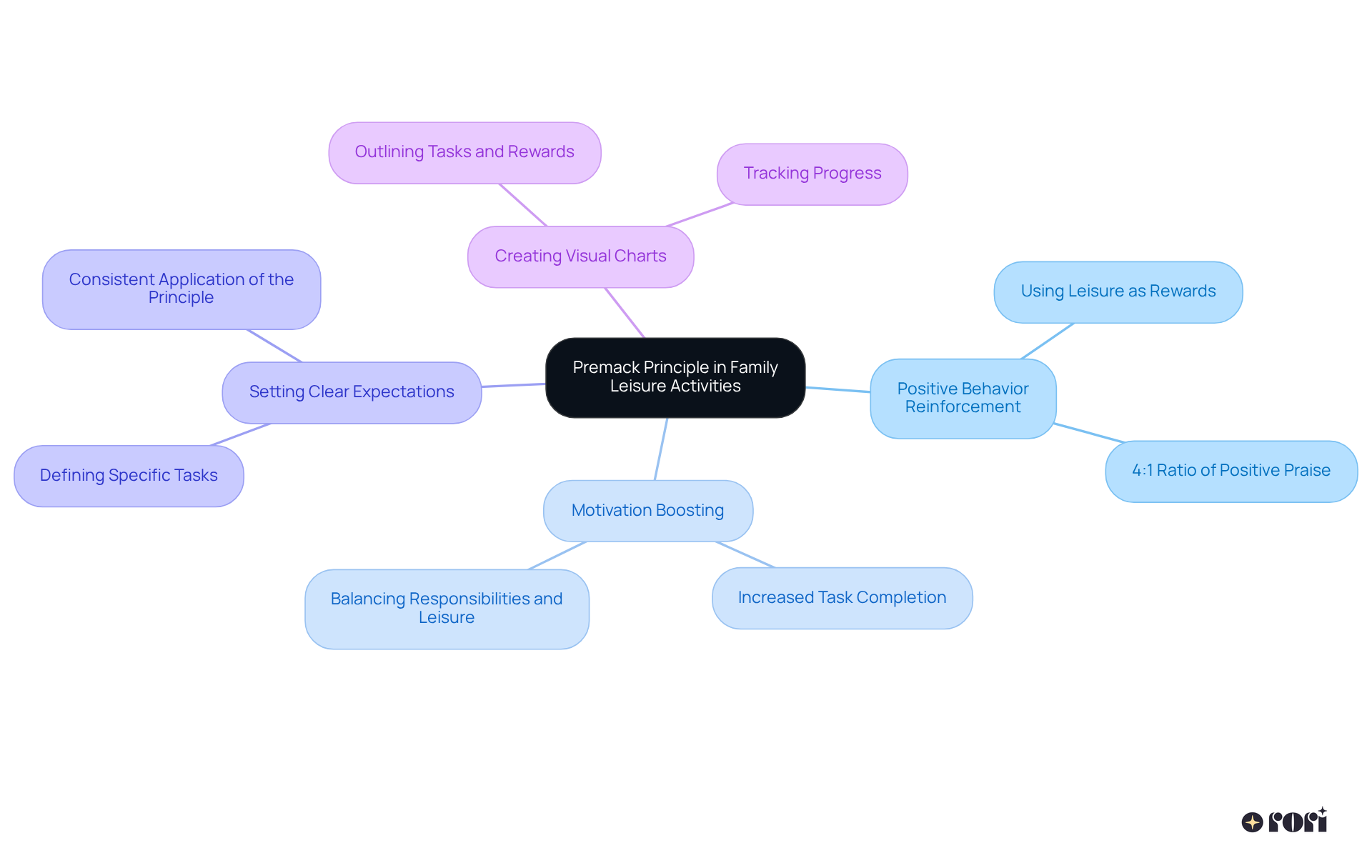
Coaches can really make a difference by utilizing an example of the Premack Principle. Imagine allowing athletes to dive into enjoyable drills or games right after those tough training sessions! This approach not only keeps athletes motivated to push through challenging workouts but also creates a positive team atmosphere where hard work is recognized and rewarded with fun experiences. Coaches can boost motivation and commitment among athletes by applying an example of Premack Principle, connecting those intense training sessions with more enjoyable activities.
This strategy fits perfectly with conduct management techniques that focus on positive reinforcement. As we've seen, 'Positive reinforcement develops favorable habits, boosts enthusiasm, and establishes a constructive training atmosphere.' Plus, creating a feedback-rich environment is key! It helps athletes refine their skills and fosters a culture of open communication.
And let’s not forget about parents! They play a vital role in this process by supporting their kids' motivation through parent-led ABA solutions. This reinforces the connection between effort and enjoyment in sports. So, let’s explore this together and see how we can all contribute to a positive experience for our young athletes!
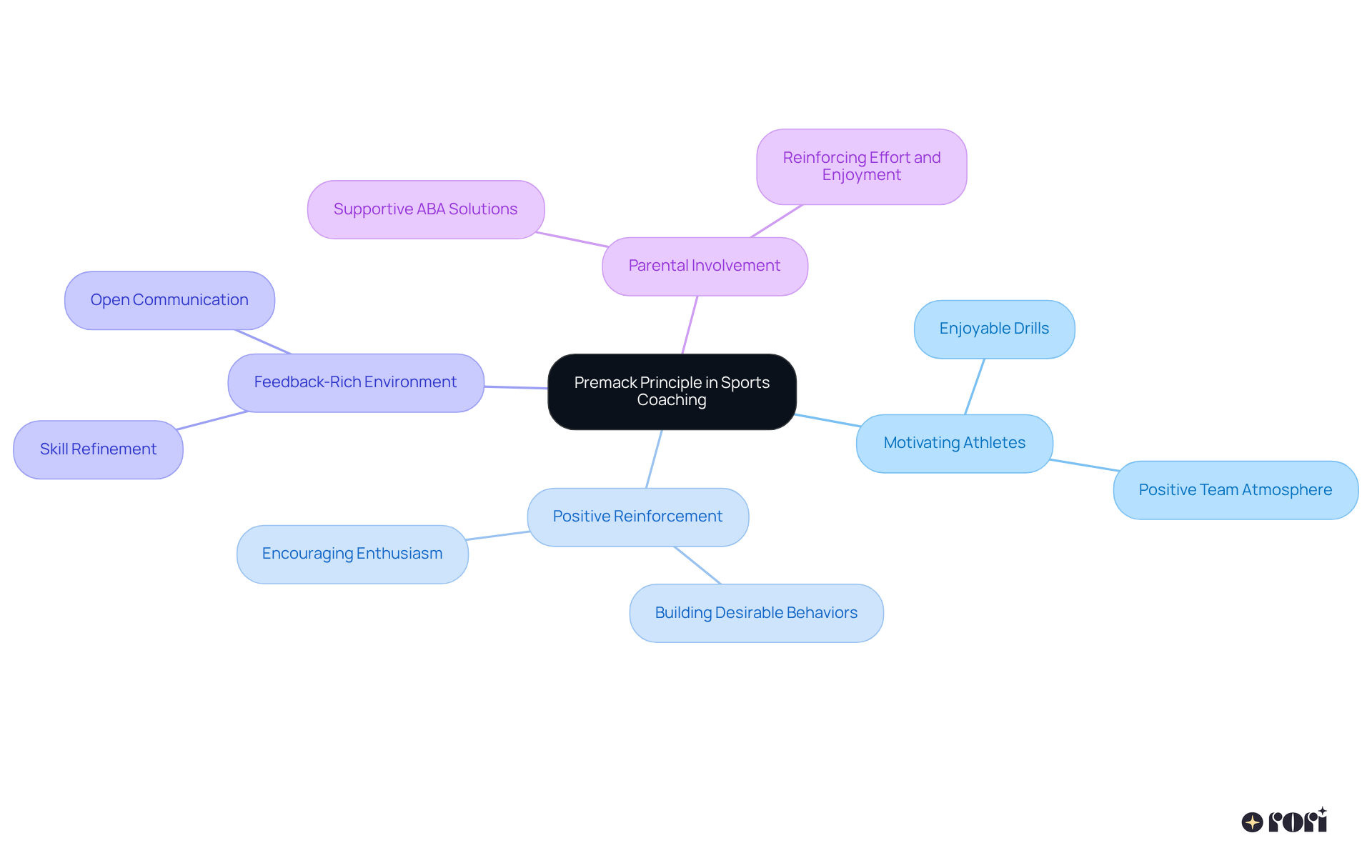
Incorporating technology can really boost how we apply the example of Premack Principle, especially with tracking apps and software that help monitor and encourage positive behaviors. For instance, a conduct tracking app can motivate kids by awarding points for completing tasks, which they can then trade for fun activities or rewards. This approach not only makes behavior modification more engaging but also provides valuable insights for clinicians and families to assess progress effectively.
Research shows that these applications can lead to better outcomes in ABA therapy, as they allow for real-time adjustments to interventions based on what’s being monitored. It’s exciting to see successful uses of these tools, as they effectively reinforce desired behaviors while creating a structured environment for behavior modification. This ultimately fosters a collaborative atmosphere between therapists and families.
However, it's crucial to prioritize client privacy when using these apps. Ensuring that data is stored securely and only shared with authorized individuals is essential, especially in line with laws like HIPAA. Plus, while many studies highlight positive results, it’s important to share specific statistics about the effectiveness of these tools in ABA therapy to boost credibility.
Expert opinions on using apps provide an example of Premack Principle, validating these strategies and offering insights from professionals in the field. Lastly, acknowledging the challenges that come with implementing data-driven methods—like the time-consuming nature of data collection and ethical considerations regarding client privacy—will help paint a more balanced picture of the topic. Let’s explore this together! We're here to help you every step of the way!
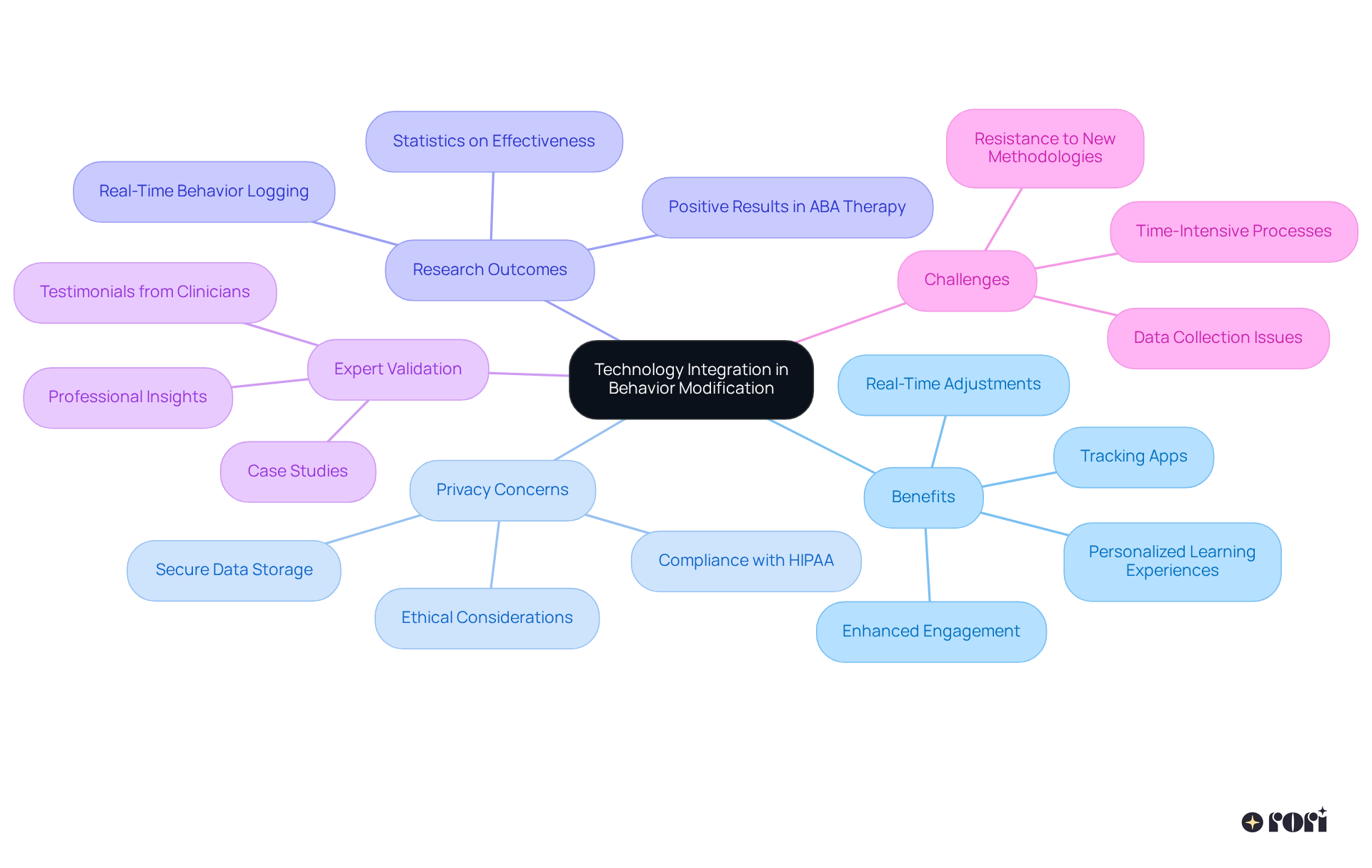
The Premack Principle really shines as a game-changer in behavior management, using the allure of preferred activities to inspire individuals to tackle less appealing tasks. By weaving this principle into different settings—like therapy, education, parenting, and even workplaces—caregivers and professionals can craft structured routines that not only boost task completion but also nurture positive behaviors and skill growth.
Throughout this article, we’ve seen plenty of examples showcasing the Premack Principle's effectiveness. Think about how children can be motivated to finish chores before diving into screen time or how enjoyable activities can be paired with educational tasks. This principle has proven to significantly enhance motivation and engagement. Plus, case studies in dog training and sports coaching highlight how this strategy can reinforce desired behaviors, creating a positive atmosphere for learning and growth.
Incorporating the Premack Principle into daily routines offers a straightforward yet powerful approach to behavior management. By recognizing the importance of balancing responsibilities with enjoyable rewards, caregivers, educators, and managers can foster a more motivated and productive environment. Embracing this principle not only boosts individual outcomes but also strengthens relationships, making it a wonderful tool for building a supportive and engaging atmosphere for everyone involved. Let’s explore this together and see how we can make a difference!
What is the Premack Principle?
The Premack Principle is a strategy in behavior modification that uses a more favored activity to encourage a less favored one, often summarized by the phrase "first, then." For example, a child may complete their homework before playing a favorite video game.
How does the Premack Principle benefit children in ABA therapy?
The Premack Principle enhances children's behavior in autism treatment by increasing task completion and behavior management. Research indicates that 90% of youth showed significant improvement when preferred activities were linked with less desirable tasks, especially with active caregiver involvement.
Can you provide an example of the Premack Principle in practice?
One example is a case study involving a 7-year-old with autism, where pairing homework with a favorite snack led to better task completion rates and fewer challenging behaviors, such as tantrums.
How can educators apply the Premack Principle in the classroom?
Educators can link enjoyable activities, like games or art projects, to less popular tasks, such as math worksheets. This approach has been shown to increase task completion rates by 30% and maintain positive behaviors in 75% of learners over six months.
What strategies can educators use to implement the Premack Principle effectively?
By establishing clear routines and incentives, educators can create a positive reinforcement cycle that enhances student engagement and makes learning more enjoyable.
How can the Premack Principle be used in dog training?
In dog training, the Premack Principle can be applied by allowing a dog to engage in a favorite activity, like playing fetch, after completing a less exciting task, such as sitting on command. This reinforces desired behaviors and strengthens the bond between the dog and owner.
What are the benefits of using the Premack Principle in dog training?
Research shows that around 80% of dogs improve their behavior with positive reinforcement strategies like the Premack Principle, helping them associate obedience with rewarding experiences.
What tips can enhance the effectiveness of the Premack Principle in training?
Immediate rewards after the desired behavior and maintaining consistency in training methods are essential for creating clear associations and improving the effectiveness of the Premack Principle.